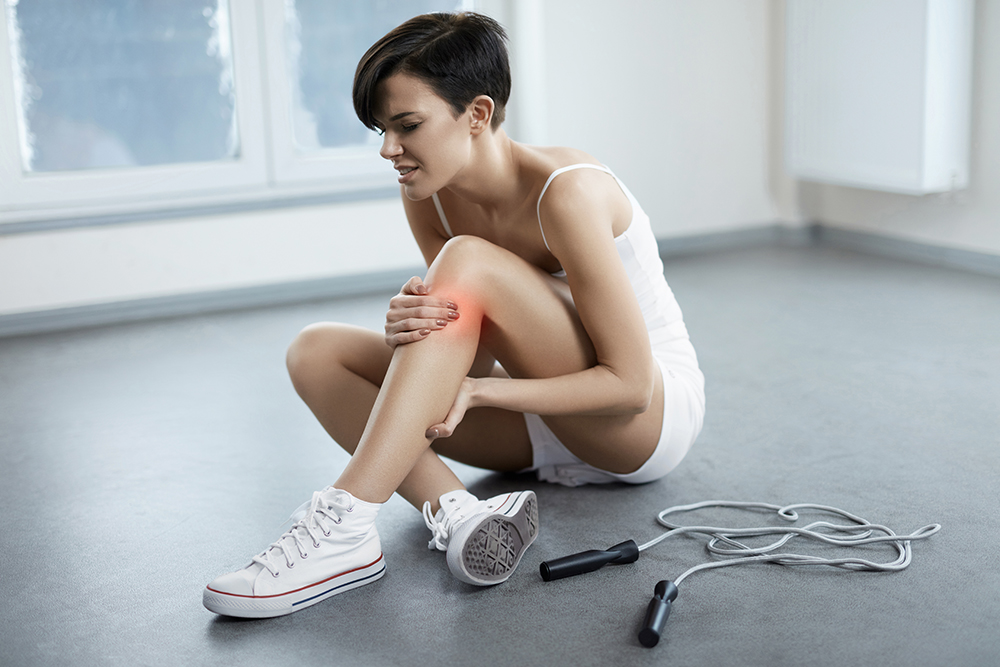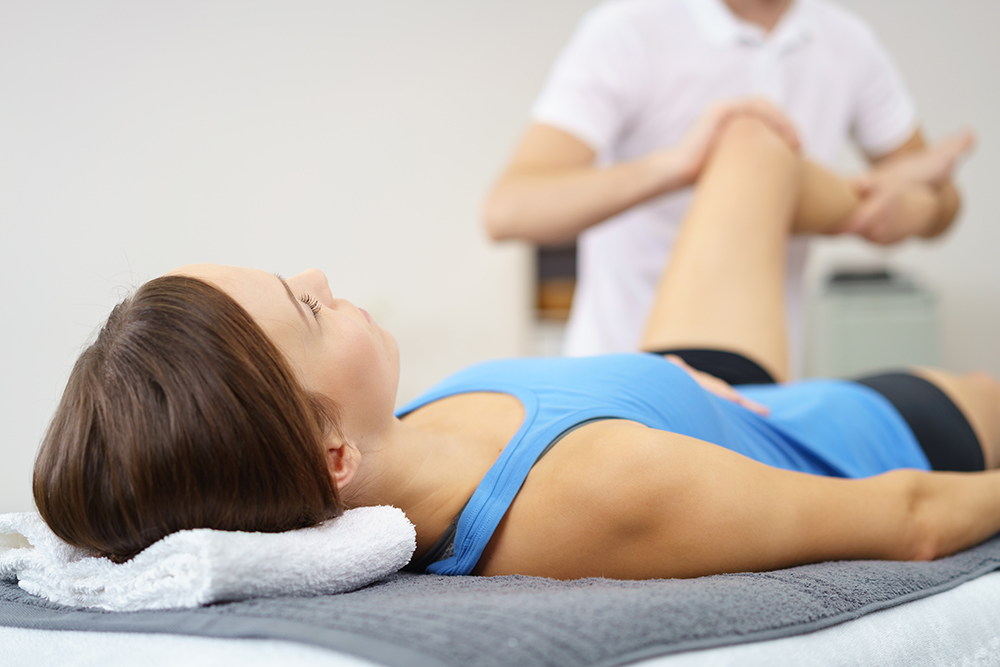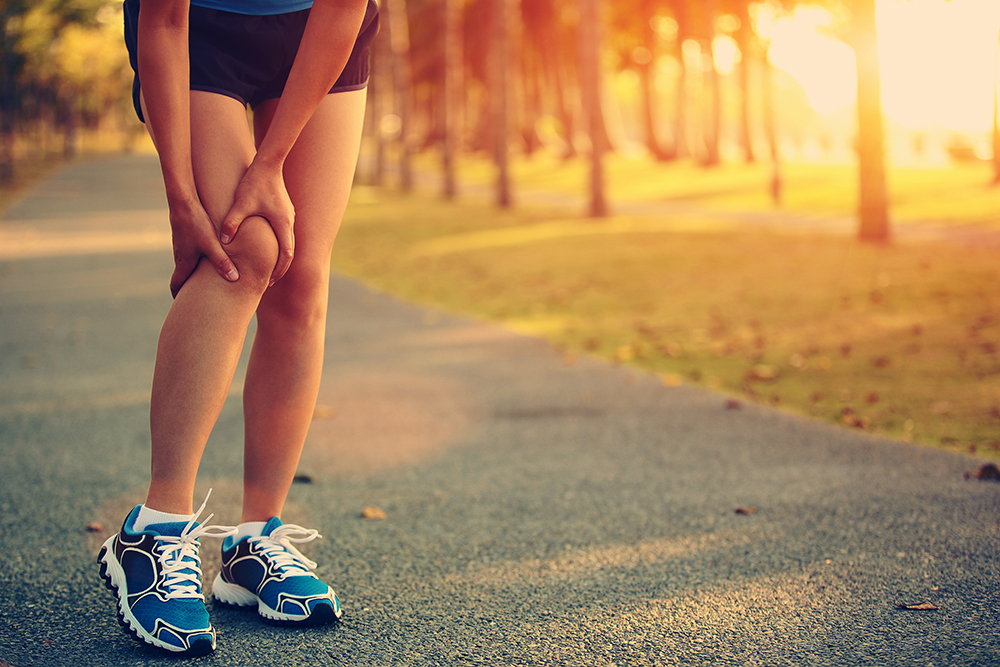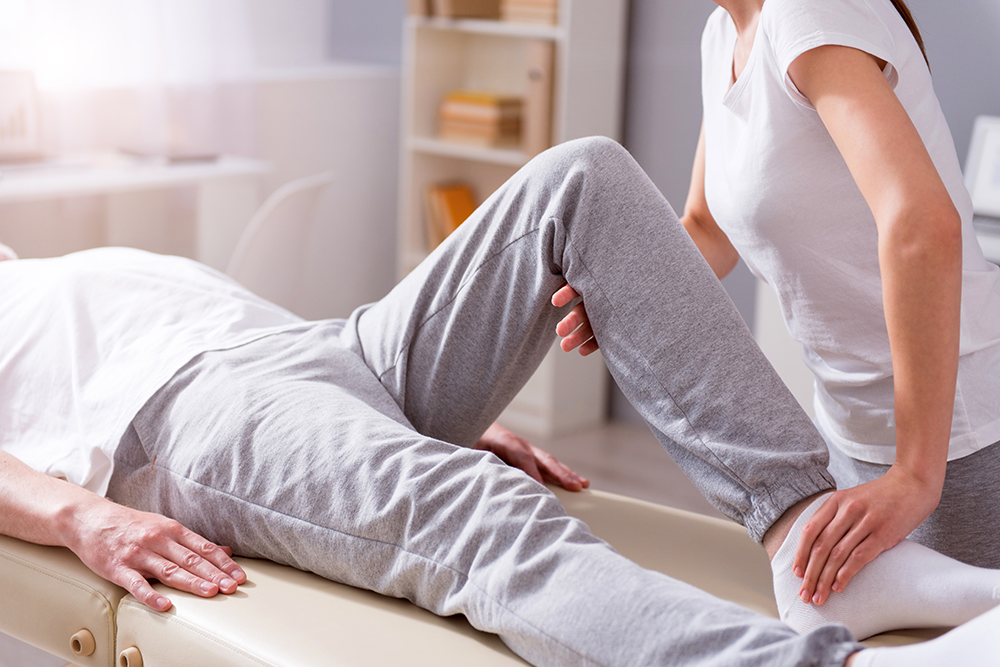Arthritis of the Knee
Arthritis is inflammation of one or more of your joints. Pain, swelling, and stiffness are the primary symptoms of arthritis. Any joint in the body may be affected by the disease, but it is particularly common in the knee. Knee arthritis can make it hard to do many everyday activities, such as walking or climbing stairs. It is a major cause of lost work time and a serious disability for many people.
Although there is no cure for arthritis, there are many treatment options available to help manage pain and keep people staying active.
The major types of arthritis that affect the knee are osteoarthritis, rheumatoid arthritis, and posttraumatic arthritis.
Osteoarthritis
Osteoarthritis is the most common form of arthritis in the knee. It is a degenerative,”wear-and-tear” type of arthritis that occurs most often in people 50 years of age and older, but may occur in younger people, too. In osteoarthritis, the cartilage in the knee joint gradually wears away. As the cartilage wears away, it becomes frayed and rough, and the protective space between the bones decreases. This can result in bone rubbing on bone, and produce painful bone spurs. Osteoarthritis develops slowly and the pain it causes worsens over time.
Rheumatoid Arthritis
Rheumatoid arthritis is a chronic disease that attacks multiple joints throughout the body, including the knee joint. It is symmetrical, meaning that it usually affects the same joint on both sides of the body. In rheumatoid arthritis the synovial membrane that covers the knee joint begins to swell, This results in knee pain and stiffness. Rheumatoid arthritis is an autoimmune disease. This means that the immune system attacks its own tissues. The immune system damages normal tissue (such as cartilage and ligaments) and softens the bone.
Posttraumatic Arthritis
Posttraumatic arthritis is form of arthritis that develops after an injury to the knee. For example, a broken bone may damage the joint surface and lead to arthritis years after the injury. Meniscal tears and ligament injuries can cause instability and additional wear on the knee joint, which over time can result in arthritis.
Symptoms
A knee joint affected by arthritis may be painful and inflamed. Generally, the pain develops gradually over time, although sudden onset is also possible. There are other symptoms, as well:
• The joint may become stiff and swollen, making it difficult to bend
and straighten the knee.
• Pain and swelling may be worse in the morning, or after sitting or
resting.
• Vigorous activity may cause pain to flare up.
• Loose fragments of cartilage and other tissue can interfere with
the smooth motion of joints. The knee may “lock” or
“stick” during movement. It may creak, click, snap or
make a grinding noise (crepitus).
• Pain may cause a feeling of weakness or buckling in the
knee.
• Many people with arthritis note increased joint pain with rainy
weather.
Treatment of Knee Arthritis
There is no cure for arthritis but there are a number of treatments that may help relieve the pain and disability it can cause.
Some changes in your daily life can protect your knee joint and slow the progress of arthritis.
• Minimize activities that aggravate the
condition, such as climbing stairs.
• Switching from high impact activities
(like jogging or tennis) to lower impact
activities (like swimming or cycling) will
put less stress on your knee.
• Losing weight can reduce stress on the
knee joint, resulting in less pain and
increased function.
Specific exercises can help increase range of motion and flexibility, as well as help strengthen the muscles in your leg. Your doctor or a physical therapist can help develop an individualized exercise program that meets your needs and lifestyle.
Using devices such as a cane, wearing shock-absorbing shoes or inserts, or wearing a brace or knee sleeve can be helpful. A brace assists with stability and function, and may be especially helpful if the arthritis is centered on one side of the knee. There are two types of braces that are often used for knee arthritis: An “unloader” brace shifts weight away from the affected portion of the knee, while a “support” brace helps support the entire knee load.
Applying heat or ice, using pain-relieving ointments or creams, or wearing elastic bandages to provide support to the knee may provide some relief from pain.
Several types of drugs are useful in treating arthritis of the knee. Because people respond differently to medications, your doctor will work closely with you to determine the medications and dosages that are safe and effective for you. Over-the-counter, non-narcotic pain relievers and anti-inflammatory medications are usually the first choice of therapy for arthritis of the knee
Another type of pain reliever is a nonsteroidal anti-inflammatory drug, or NSAID (pronounced “en-said”). NSAIDs, such as ibuprofen and naproxen, are available both over-the-counter and by prescription.
Corticosteroids (also known as cortisone) are powerful anti-inflammatory agents that can be injected into the joint These injections provide pain relief and reduce inflammation; however, the effects do not last indefinitely. Your doctor may recommend limiting the number of injections to three or four per year, per joint, due to possible side effects.
In some cases, pain and swelling may “flare” immediately after the injection, and the potential exists for long-term joint damage or infection. With frequent repeated injections, or injections over an extended period of time, joint damage can actually increase rather than decrease.
Hyaluronic acid is a natural component of synovial fluid. Hyaluronan injections help to lubricate joints, which gives you temporary pain relief. Usually a single injection is administered. You won’t need to rest the joint after the injection. The injection should work within days if effective and can last for a few months.
Hyaluronan injections have very few side-effects, although some people have a slight allergic reaction, which causes temporary pain and swelling in their joint after the injection. There’s also a very small risk of infection.
Disease-modifying anti-rheumatic drugs (DMARDs) are used to slow the progression of rheumatoid arthritis. Drugs like methotrexate, sulfasalazine, and hydroxychloroquine are commonly prescribed. In addition, biologic DMARDs like etanercept (Embril) and adalimumab (Humira) may reduce the body’s overactive immune response. Because there are many different drugs today for rheumatoid arthritis, a rheumatology specialist is often required to effectively manage medications.
Glucosamine and chondroitin sulphate, substances found naturally in joint cartilage, can be taken as dietary supplements. Although patient reports indicate that these supplements may relieve pain, there is no evidence to support the use of glucosamine and chondroitin sulfate to decrease or reverse the progression of arthritis.
Many alternative forms of therapy are unproven, but may be helpful to try, provided you find a qualified practitioner and keep your doctor informed of your decision. Alternative therapies to treat pain include the use of acupuncture and magnetic pulse therapy. Acupuncture uses fine needles to stimulate specific body areas to relieve pain or temporarily numb an area. Although it is used in many parts of the world and evidence suggests that it can help ease the pain of arthritis, there are few scientific studies of its effectiveness. Be sure your acupuncturist is certified, and do not hesitate to ask about his or her sterilization practices. Magnetic pulse therapy is painless and works by applying a pulsed signal to the knee, which is placed in an electromagnetic field. Like many alternative therapies, magnetic pulse therapy has yet to be proven.
Your doctor may recommend surgery if your pain from arthritis causes disability and is not relieved with nonsurgical treatment. As with all surgeries, there are some risks and possible complications with different knee procedures. Your doctor will discuss the possible complications with you before your operation.
• Arthroscopy. During arthroscopy, doctors use small incisions and thin instruments to diagnose and treat joint problems. Arthroscopic surgery is not often used to treat arthritis of the knee. Arthrosocpic surgery may be recommended to treat a torn meniscus which is causing menchanical problems with the knee.
• Cartilage grafting. Normal, healthy cartilage tissue may be taken from another part of the knee or from a tissue bank to fill a hole in the articular cartilage. This procedure is typically considered only for younger patients who have small areas of cartilage damage.
• Synovectomy. The joint lining damaged by rheumatoid arthritis is removed to reduce pain and swelling.
• Osteotomy. In a knee osteotomy, either the tibia (shinbone) or femur (thighbone) is cut and then reshaped to relieve pressure on the knee joint. Knee osteotomy is used when you have early-stage osteoarthritis that has damaged just one side of the knee joint. By shifting your weight off the damaged side of the joint, an osteotomy can relieve pain and significantly improve function in your arthritic knee.
• Total or partial knee replacement (arthroplasty). Your doctor will remove the damaged cartilage and bone, and then position new metal or plastic joint surfaces to restore the function of your knee.
Recovery
After any type of surgery for arthritis of the knee, there is a period of recovery. Recovery time and rehabilitation depends on the type of surgery performed. Your doctor may recommend physical therapy to help you regain strength in your knee and to restore range of motion. Depending upon your procedure, you may need to wear a knee brace, or use crutches or a cane for a time. In most cases, surgery relieves pain and makes it possible to perform daily activities more easily.
Mr Atwal strongly believes in joint preservation therapies and is currently conducting a Europe-wide trial on a novel injection. For more information on knee arthritis and the various treatment options please do not hesitate to get in touch with Mr Atwal through our appointments page.




QUICK ENQUIRY


